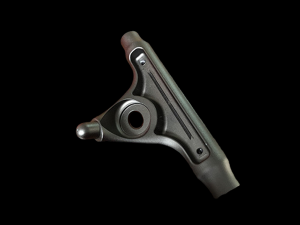
The corrosion resistance testing standards for automotive parts mainly have the following requirements for the performance of parts:
**I. Material performance requirements**
1. Corrosion resistance: The material of parts should have good corrosion resistance and be able to resist the erosion of corrosive media under different environmental conditions. For example, in environments such as salt spray, humidity, and acid rain, the material should not show obvious phenomena such as rusting, corrosion, and peeling.
2. Chemical stability: The material should have stable chemical properties and be not easily react with substances in the surrounding environment. For example, it should not undergo oxidation, hydrolysis, and other reactions with oxygen, moisture, and pollutants in the air.
3. Strength and hardness: While ensuring corrosion resistance, the material of parts should also have sufficient strength and hardness to meet the mechanical performance requirements of automobiles during use. For example, it should be able to withstand certain loads, impacts, and vibrations.
**II. Surface treatment performance requirements** 1. Coating adhesion: For parts with coatings, the coating should have good adhesion to the substrate material and not be easily peeled off. For example, in tests such as grid cutting tests, the coating should be able to maintain good bonding force and not show large-area peeling phenomena.
2. Wear resistance: The surface treatment of parts should have certain wear resistance and be able to resist friction and wear during use. For example, when in contact with other components or subject to external friction, the surface treatment should not be easily damaged.
3. Appearance quality: Parts after surface treatment should have good appearance quality, with a smooth and flat surface and no obvious defects. For example, there should be no surface defects such as blisters, pinholes, and flow marks.
**III. Sealing performance requirements**
1. Waterproof performance: For some parts that need to be sealed, such as engine blocks and transmission cases, they should have good waterproof performance. In corrosion resistance tests, there should be no phenomena such as seepage and leakage to prevent internal parts from being corroded.
2. Dustproof performance: Parts should be able to effectively prevent dust and impurities from entering the interior to protect the normal operation of internal parts. For example, parts used in sandy environments should have good dustproof performance.
3. Air tightness: For some parts that need to maintain gas sealing, such as braking systems and fuel systems, they should have good air tightness. In corrosion resistance tests, there should be no air leakage phenomena to ensure the normal operation of the system.
**IV. Electrical performance requirements**
1. Insulation performance: For some electrical parts such as wires and sensors, they should have good insulation performance and be able to maintain good electrical insulation in humid and corrosive environments. For example, in salt spray environments, the insulation layer of wires should not show damage, leakage, and other phenomena.
2. Voltage resistance performance: Electrical parts should be able to withstand a certain voltage. In corrosion resistance tests, there should be no phenomena such as breakdown and short circuit. For example, in high-humidity environments, sensors should be able to work normally without being affected by voltage fluctuations.
3. Signal transmission performance: For some parts that need to transmit signals, such as wiring harnesses and connectors, they should have good signal transmission performance and be able to maintain stable signal transmission in corrosive environments. For example, in salt spray environments, the signal transmission of wiring harnesses should not be significantly interfered. In conclusion, the corrosion resistance testing standards for automotive parts have multi-faceted performance requirements for parts, including material performance, surface treatment performance, sealing performance, and electrical performance. These requirements aim to ensure that automotive parts can maintain good performance and reliability in various harsh environments, thereby ensuring the safe operation and service life of automobiles.





